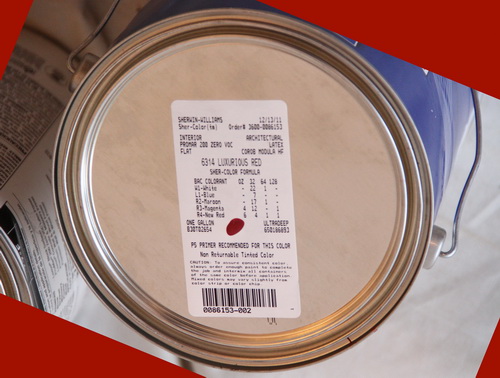
Winter Color Consultation Advice from Northern Virginia / Washington DC Painting Contractor
Pop quiz: what color makes a space warmer? Black, or red?
If you answered “black”, then you have a good understanding of basic optical physics. Dark colors absorb more heat than light colors, and therefore make a space physically warmer.
If you answered “red”, however, then you are tapping into a much more subtle, psychological concept of ‘temperature’. In study after study, it has been discovered that the colors at the long end of the spectrum – red, orange, and yellow – seem “warmer” to the majority of people, while the colors at the opposite end of the spectrum – green, blue, indigo, and violet – seem “cooler”. Although the hue doesn’t have any actual bearing on the physics of heat absorption, the psychological impact of a color’s ‘temperature’ can play an important role during the winter season.
Using warm colors in your interiors can go a long way toward warming up a space and raising spirits during the long, dark, cold months. Red is a hot, feisty color that raises energy, encourages liveliness, and stimulates the appetite. Orange is fun and wild, invoking playful scenes from the hot months of summer and similarly raising the energy in the room. Yellow is sunny and cheerful, mimicking the expansive feel of a sunny day. All three colors can slightly increase heart rate, making you feel warmer even when the physical temperature stays the same.
Where do these temperature associations come from? They probably come from our ancestral experiences in nature. Red, for example, is typically used as an attention-getting signal in the animal kingdom, whether the attention is sought in order to attract or to warn. Many poisonous creatures are red – but so are delicious, edible berries. Red (along with orange and yellow) is also the color of fire. So the human instincts are designed to sit up and take notice around the color red – which feels exciting and therefore ‘warming’. Orange has a similar set of natural associations, and yellow has an even more direct connection to feelings of heat: it is the color of warm sunlight. Black, on the other hand, although it is physically the best heat absorber, is paradoxically associated with night, which has dark, mysterious, and cool connotations, rather than invoking warmth.
How can you use a warm color palette to warm your spirits? Use warm colors to paint kitchens, dining rooms, sun rooms, and family rooms – social areas where people gather to eat, drink, talk, and while away the cold hours of winter. Even on the coldest day, a warm color scheme will enliven your space and create a sensation of heat and comfort even on the darkest, coldest nights Old Man Winter has to offer.